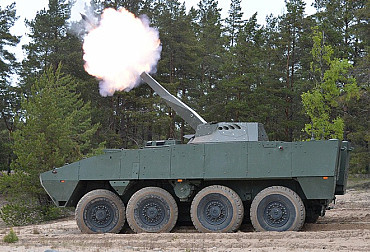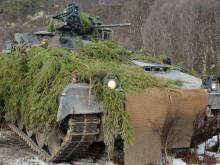The Lynx KF41 is the logical choice for the Czech Army
The Czech Army needs modern infantry fighting vehicles capable of dominating the battlefield for the next 30 years. In order to achieve this, such vehicles need not only excellent mobility and survivability through firepower and protective capabilities, but also adaptability. The ability to meet the requirements of the battlefield of the future through growth potential is a key factor to be taken into account in the Czech Army’s final decision.
When acquiring vehicles to serve the Army for decades to come, it is essential to take into account the entire life cycle costs. The more dated the vehicle concept is when acquired, the more the costs incurred in upgrading and maintaining it will increase over time. In the never-ending struggle between changing threats and AFV design, the limitations of in-service IFVs are becoming increasingly apparent. Existing designs, many of which made their debuts multiple decades ago, are rapidly approaching a tipping point beyond which their protective capabilities and capacities can no longer be improved.
It is beyond doubt that protection, capacity and adaptability will define the next generation of IFVs, enabling them to exceed current user requirements with the inherent flexibility needed to meet and adapt to future threats throughout their life-of-type (LOT).
Video: Lynx KF41 - Czech Republic / YouTube
This growth potential will include:
• Payload capacity to allow additional protection – both passive and active – as well as increased firepower and other future features;
• Volume capacity to physically accommodate additional internal and external armour, new armament, equipment and systems;
• Automotive and mechanical capacity to retain and even improve vehicle mobility and responsiveness despite operating vehicle mass increases; and
• Generic Vehicle Architecture (GVA) and electrical power capacity facilitating the effective integration of new systems, sensors and equipment – now and in the future.
These elements must be built into an IFV from its inception; they can rarely be added afterwards, and even then only in a piecemeal and limited manner.
Only one current IFV design has the ability to achieve all of these future requirements: Rheinmetall’s new Lynx KF41.
The Lynx and its origins
Based on the more than 50 years of experience and know-how of building armoured vehicles the concept for the Lynx KF41 family of vehicles has its basis in the operational requirements which modern armies are likely to face in years to come.
With armoured manoeuvrability at the core of an army’s ability to fight, survive and win on the battlefields of today and tomorrow, and with the IFV often the most numerous and versatile type of combat vehicle within the manoeuvring force, it is critical that the modern IFV possesses the necessary protection, mobility and firepower for the threats of today rather than those of the past.
Coupled with disaggregated battlespaces involving state and non-state participants and complex human terrain in which front lines are poorly defined, it becomes clear that, if an IFV is to remain deployable and operationally relevant in the future, it must have the ability to adapt as required. This requires an abundance of capacity and flexibility.

Picture: Based on the more than 50 years of experience and know-how of building armoured vehicles the concept for the Lynx KF41 family of vehicles has its basis in the operational requirements which modern armies are likely to face in years to come. | Rheinmetall
The Lynx KF41 has been designed from its inception to meet the following operational needs:
• Combined arms capabilities at the platoon level, so that commanders can adapt while in contact;
• Combined arms fighting systems to conduct operations across the spectrum of conflict;
• High mobility to enable tactical flexibility in contact;
• Adaptable vehicle systems that can be upgraded or modified in the theatre of conflict; and
• Survivability that forces the enemy to operate above the detection threshold.
This has resulted in a vehicle with:
• High levels of inherent capability;
• Modularity allowing tailored protection and the achievement of rapid upgrades;
• Open electrical, electronic, software and mechanical architectures; and
• Increased payload and electrical power.
With its technically low-risk design the Lynx KF41 is the most balanced IFV in the world, with scalable protection levels, 30mm-, 35mm- or larger-calibre machine cannon options, the ability to seat up to nine dismounts, and a high level of mobility resulting from its low ground pressure and well-balanced power-to-weight ratio.





















